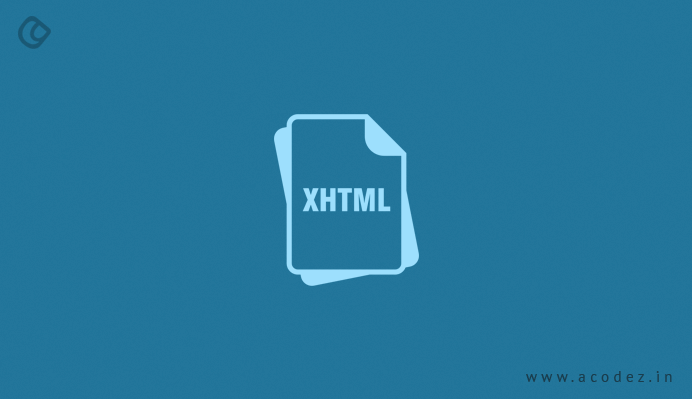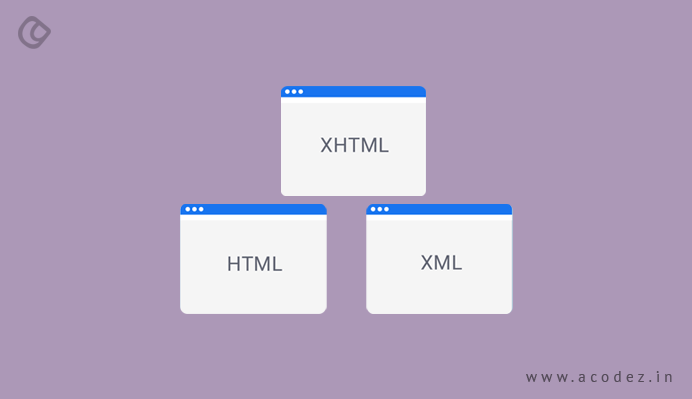One of the most interesting facts about HTML or Hypertext Markup Language is that it happens to be one of the first and foremost languages, developed for the web. A language that the internet speaks even today and will continue forever. Simply, we know that anything and everything that is showcased within a browser is structured using HTML. This is the foundation of any web development. Over the years, as the web and technology evolved, HTML has gracefully improved and enhanced.
Moreover, the structure of HTML, as you know, is statically organized with content that never decides to move or budge. In the early days of the web, we had only those websites that would stare back when we look at them. It implements tags to convey to the browser how the text on a website is expected to be displayed. The formatting was way too simple. With HTML tags, the browser knows what exactly it has to do in certain situations, as in some instances certain pieces of text should be displayed as bold, and the way the headlines have to be created, hyperlinks added and text alignment, and more. But when it comes to the modern-day dynamic website, once we have all the HTML markups within a document ready, all the other dynamic components get embedded into this file. This includes a lot of aspects, including the server-side scripts that you need to connect your site to the database, CSS files for adding whatever stylistic elements are needed and a JavaScript program needed to bring about interactivity. So these files get linked to the HTML file – which is not the major component of any site.
So, now let us take a look at the most modern version of HTML, which is HTML5.
HTML5 has been gaining a lot of popularity for the wide range of aspects and features that it offers, unlike the previous version. It modifies and enhances some of the features that have been derived from the oldest version. This includes a range of codes, such as CSS, JavaScript, and HTML, which are encapsulated together as different components, which helps HTML5 to make it easier for developers to start working at a better speed and improve efficiency. So now the dynamic site, which comes as the output is mobile-friendly, responsive, agile and well-matched with browsers.
HTML is different from HTML 5. One of the major advantages that it has over HTML is that it allows cross-platform application development. So when you have HTML5, you need not to worry about bringing in XHTML to address certain concerns created by HTML. The compatibility that it offers across browsers is something that was not found in HTML. In HTML5, you find a number of new APIs and features, including drag-and-drop effects, drawing, video playback – and all the effects that developers were able to bring about using third-party plugins.
Extensible Hypertext Markup Language (XHTML)

XHTML is more or less similar to HTML4. However, it comes with some of the XML elements that are embedded with HTML capabilities. XHTML was introduced right after HTML4, but before HTML5 – and it helped to get rid of some of the cross-browser compatibility issues that came with HTML4. It might have some better and advanced specifications and standards, which helps in further breaking down the data of a site and transmit it through. This means it has advanced features though it might be challenging to debug this. It uses the same format as an XML application, which as you know is an explanatory markup language that is more or less an accomplice of HTML when it comes to especially arrangement of data. HTML displays data using markup, while XML uses it to describe various data components. But with the launch of HTML5, the weaknesses of XHTML got covered and a new set of features were born as discussed below:
- With HTML 5, you need not worry about the <div> tags that are now replaced with semantic components, helping designers to implement code that is clean and neat.
- It also helps in bringing about a better understanding of a page’s structure when you have HTML5.
- HTML5 comes with a variety of latest standardized features (in line with the latest trends), which can be used for creating amazing front-end apps, and some of these include discussion boards, drag- and- drop tools, wikis and others.
- Now, it has the feature that enables people to share their present location, using Geolocation. This utilizes cell tower where your phone is talking to or using a dedicated GPS hardware, which helps in calculating the longitude and latitude based on information that was shared by satellites, IP addresses, and wireless network connection. Using the latest HTML5 Geolocation, APIs can ensure that the available location is HTML5 compatible and in line with the browser on which the app is being accessed.
- With HTML5, you have a better and wiser idea to actually specify those files that the browser is supposed to cache. With this, the pages can be directly loaded and viewed even when you go offline.
- The forms used are elegant and maybe we could even say that with HTML5, you can create forms that are fancier in appearance. You can have a number of components on the forms, including inputs, search and fields that render a variety of purposes.
- Reliability or steadiness is something that you can achieve when using the latest HTML5 elements, which you cannot expect when using HTML. So when HTML is being used for coding, there would be a consistency across all sites. So even if you haven’t designed or developed a particular site, this steadiness of code will help you understand how the web page was created.
- It comes with an extended support to rich media elements, as HTML5 displays a wonderful inbuilt capacity to play audio, video, which can be run without any of those plugin tags.
- One of the best advantages of HTML5 is its offline application cache facility, which helps in loading the page that the user had visited while the user was not online (in offline mode). With this feature, the files can be loaded much faster, thereby helping to reduce the load that existed on a server otherwise. What more do you need?
Let us now take a look at some of the interesting features of XHTML:

- Code that is clean: Since all XHTML codes come with closing tags that are nested clearly and perfectly, you can now generate code that is clean.
- Search engine crawlers: As we discussed in the previous point, XHTML documents are presented with code that is clean, which makes it easier for search engines to crawl through these.
- Loading speed is enhanced: Since the code is clean, the web pages will automatically be error-free, which means that all these pages will take the lesser time or would load in no time across the browsers.
- Bandwidth costs are reduced: Regardless of any number of pages that your website contains, the slender nature of your XHTML documents will actually mean that it will use lesser bandwidth, which ultimately helps in reducing costs.
- Backward compatibility: Regardless of your browser’s nature – in case it is not ready to work in line with your XHTML document, it is capable of adorning the backward compatibility mode to transition into older, non-XHTML compliant web browsers. So rather than using the HTML tags that are messy and untidy, your pages will now exhibit XML tags that are appropriately closed and well-nested, with no loopholes.
- Interoperability that is enhanced: So unlike the traditional HTML pages, XHTML provides a variety of interesting features, wherein your well-established XHTML documents can be very easily moved to any wireless devices or different or unique web environments that it might not have entered before.
- There is improvisation inaccessibility: XHTML pages follow rules that are stringent and standard, thereby avoiding non-standard markups – which makes them more accessible than those old pages built on HTML.
- New updates: Whenever a new update arrives, this gets added to XML and XHTML is an application of this XML.
- Integration with XML apps: As we already discussed, with XHTML, you can now bring about the much-awaited integration between HTML and XML applications.
- A game with CSS: So XHTML can easily work with CSS as well to help create web pages, which you can update easily.
- XML compliant: All XHTML documents that are created are compliant with XML. It makes it easier to review, edit, validate these with standardized XML tools, including MSXML parser.
- XHTML is better than whatever existed before it: So now we can write XHTML documents that can operate very well and better than any of the existing HTML4-compliant user agents, which can be used within XHTML 1.0 compliant user agents as well.
- Compliance with applications: With XHTML, you can utilize a variety of apps, such as applets and scripts, which are dependent upon the XML Document Object Model or the HTML Document Object Model.
Now you know how each differs from the other and what are the variety of advantages that each offers.
Acodez is a web development company India that offers web design and development solutions at affordable prices. We are also an SEO agency based in India offering inbound marketing solutions to help take your business to the next level. For further information, contact us today.
Looking for a good team
for your next project?
Contact us and we'll give you a preliminary free consultation
on the web & mobile strategy that'd suit your needs best.








